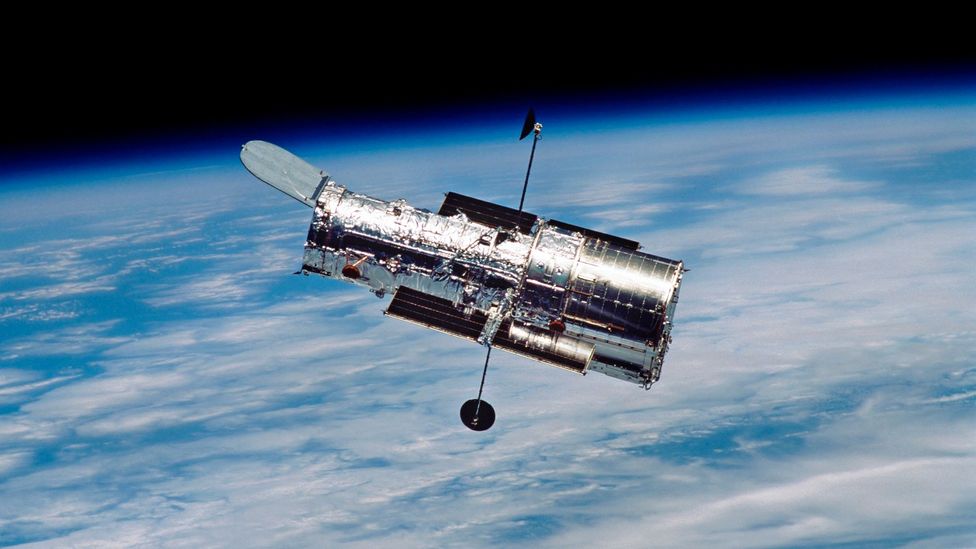The Hubble space telescope, forever changing astronomical science, was launched into orbit on April 25, 1990. In a way, the Hubble seemed like it was nothing special. It wasn’t based on some radical new telescope design; it was basically the same sort of telescope that people have been building for centuries. Indeed, it used a design from the 1940s. It wasn’t even the first telescope in orbit. However, it was just a bit better than other telescopes in some small but important ways, which all added up to make it a revolutionary piece of astronomical equipment.
For one thing, it was big, and the bigger the telescope, the better the resolution. For another, it was put together using what was at the time cutting-edge technology. Additionally, it was placed in a good orbit, freeing it from the kinds of interference from lights and clouds that limit the usefulness of Earth-bound telescopes. All in all, it could manage a resolution that was ten times greater than that of ground-based telescopes. It was also given a wide array of special sensors that could go beyond the visible spectrum to capture images in both infrared and ultraviolet.
Thanks to the Hubble’s detailed and spectacular images, scientists have been able to determine exactly how fast the universe is expanding and have been able to calculate the size and mass of our Milky Way galaxy. They have also been able to capture images of the surface of Pluto, of a comet hitting Jupiter, of distant galaxies and black holes, and even of the way the universe looked billions of years ago.
The Hubble orbits approximately 600 km, or 332 miles, above the surface of the Earth. Too much lower than that, and it would regularly encounter tiny wisps of the Earth’s atmosphere that would, in time, slow it down enough to make it fall out of orbit. A 600 km / 332-mile orbit guaranteed that it would be so far away from the atmosphere that it could stay in orbit for a long time indeed.

